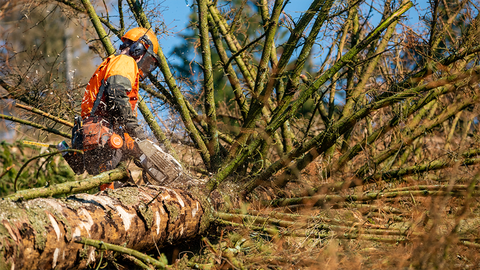Wie nutzen wir Wald?
Die Ansprüche der Menschen veränderten stets den Wald und der Wald die Menschen. Letzteres zeigt sich eindrücklich nach bahnbrechenden Erkenntnissen in der Wald- oder Materialforschung oder in Epochen der Waldzerstörung wie im 17./18. Jahrhundert. Jede Form der Waldnutzung regte die Menschen an, ihre Ausbeuten über Bewirtschaftungsformen zu sichern und zu steigern. Deutschland ist längst geprägt von Kulturlandschaften, nicht von Natur.
Seit Jahrhunderten werden in einem Waldstück oft mehrere Nutzungsarten zeitgleich betrieben. Spuren früherer Waldnutzungsformen sind oft lange sichtbar. Im 17. Jahrhundert führten Übernutzung und Ausbeutung zu einer Rohstoffknappheit und nachfolgende Generastionen standen vor verwüsteten, waldlosen Landschaften und Armut. In dieser Not keimte im 18. Jahrhundert die Idee der Nachhaltigkeit. Sie fand in kürzester Zeit viel Beachtung. Fortan sollte nur so viel Holz für Bau und Heizen geschlagen werden, wie auch nachwächst: Nachhaltigkeit war eine Absprache zwischen Wald- und Holzbauer-Generationen. Seither wird Wald immer seltener dem Zufall überlassen. Wald, Wandel und Wissen werden nicht nur vererbt, sondern fortlaufend optimiert. Wald-Entwicklungen werden beobachtet und vorausschauend beeinflusst. Auf engem Raum werden Nutzungsarten und zugehörige Bewirtschaftungsformen besser aufeinander abgestimmt, um Risiken und Krisen zu senken oder vorzubeugen. Nachhaltigkeit ist zum weltweiten Dialog zwischen allen Teilen der Gesellschaften gewachsen. Der Begriff Nachhaltigkeit umfasst heute die dauerhafte Nutzungsmöglichkeit aller natürlichen Ressourcen.
Nächste Frage: "Was kann Wald leisten?"
Zurück zur Übersicht von "Zuhause im Wald"


